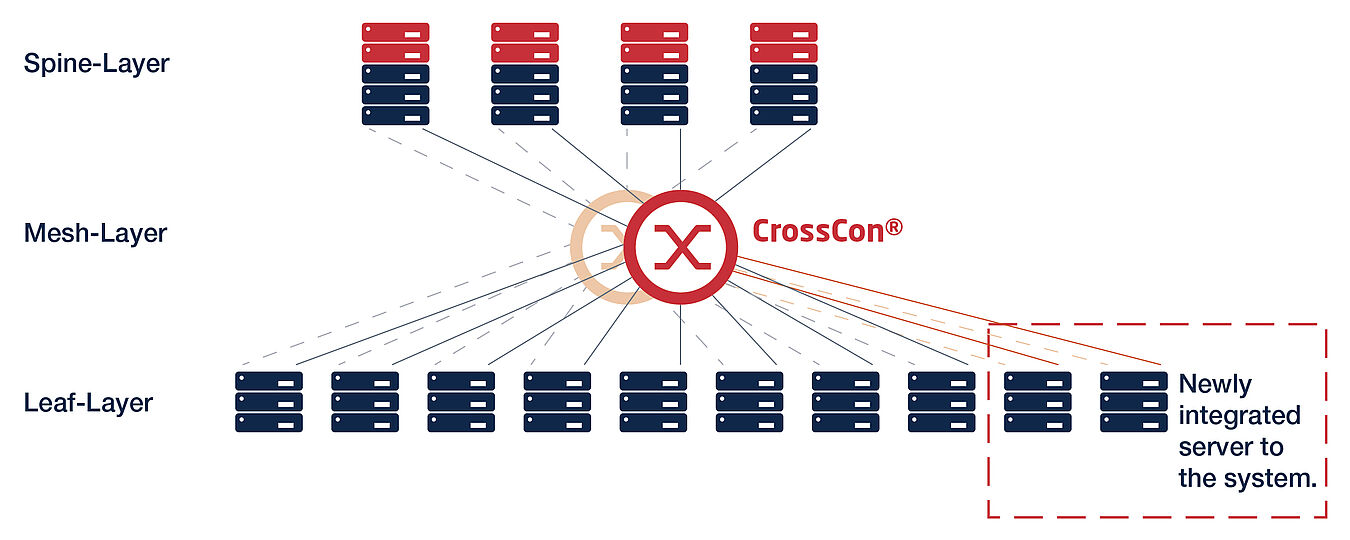
Important trends for future-oriented data center cabling, Part 2
Focus on optimal use of space and scalability
Buzzwords such as Industry 4.0, Artificial Intelligence or Big Data make it clear. More and more social and economic processes are being shifted to the online world. Every day, the demands placed on computing and storage capacities are increasing. As described in the first part of this blog series, it is crucial for data center operators and also for small, medium and global enterprises to be on the cutting edge, to adapt to the developments of the next years and to build a future-proof data center infrastructure. In addition to transmission speeds and the correct selection and professional installation of fiber optic connector systems, two further factors must not be ignored: Optimal use of space and scalability. Because due to the rapidly growing amount of data, data centres where those data streams converge are bursting at the seams. The constantly increasing demands placed on data centers mean that they have to be constantly expanded and extended. In order to keep pace with future developments, it is therefore necessary to build a high-performance, space-saving and flexibly scalable data center infrastructure.
Against this background, this article in the two-part blog series on important trends in modern data center cabling focuses on the following topics:
- High density: Highest port density in the smallest space
- Modern & highly scalable data center topology: Spine-leaf architecture
High density: Highest port density in the smallest space
Analogous to the real estate market, every inch is also precious within a data centre. IT space is in short supply. Therefore, every data center operator strives to accommodate as much performance as possible in as little space as possible. Every additional height unit (HU) that a top-of-rack switch, for example, takes up is missing from the servers below it, thus reducing the maximum computing power of a rack. High density concepts that make better use of the available space are profitable here. For example, port densities of up to 3,150 are possible with the 19″ PreCONNECT® SMAP-G2 High Density panel system and even up to 4,200 with the 19″ PreCONNECT® SMAP-G2 Ultra High Density (per m² of data center space, for a rack 80 x 120 cm with 42 HU). The latter corresponds to a port density of up to 96 LC-duplex per height unit.
In order to make the data center cabling not only space-saving but also scalable, a high degree of modularity of the panel system is required in addition to efficient space utilization. Because the use of a modular design can lead to a more reliable architecture and more deployment flexibility in data centers. Therefore, the development of the new generation of 19″ PreCONNECT® panel systems for data center cabling has been focused on that as well as on a high degree of individualization. The PreCONNECT® SMAP-G2 Standard Density allows for example panels with 1, 2, 3 and 5 height units with 1/2 or 1/4 part front panels to be combined according to individual requirements. Depending on the number of fibers and coupling type, flexible assembly and simultaneous installation of fiber optic and copper data cabling is also possible.
Modern & highly scalable data center topology: Spine-leaf architecture
Due to the fact that fully meshed spine-leaf architectures provide very low latency and high reliability, this topology is increasingly used in modern and powerful data center infrastructures. Here, each router or switch from the upper layer is connected to all routers, switches or servers of the lower layer. However, the major disadvantages of the new architecture are the increased space requirements and the massive operational effort that results from the high number of physical connections and the complex cross-connection topologies. In view of the described lack of space in data centers and the need for dynamic scalability, this is naturally fatal.
Based on this problem, a new solution approach was developed: The use of special cassettes, such as the CrossCon®. In contrast to the classic structure of a spine-leaf architecture, there is no need for complex cabling here, since the signals are crossed within the CrossCon® and are only routed to and from the CrossCon® with patch or trunk cables. This new type of signal routing can drastically improve the documentation of the cable routing and reduce the number of plugging operations required. Complex work processes during the initial installation and the subsequent expansion of further spine or leaf switches are thus avoided, a statistical source of error is reduced and thus a dynamic and simple expansion of the cabling infrastructure is made possible.


With the aim of making data center operation even more efficient, Rosenberger OSI is cooperating with FiberCon for the future joint development of an MTP®/MPO version of the CrossCon® system. Because the advantages of the MTP®/MPO connector are obvious: MTP®/MPO is an internationally standardized connector system and therefore manufacturer-independent, which is advantageous for future extensions and system reconfigurations. In addition, MTP®/MPO connectors can accommodate up to 72 fibers, resulting in considerable space savings on the PCB and in the rack.
Did you miss our first part of our blog series on „Important trends for future-oriented data center cabling”? Then click here. This article focuses on the following topics:
- „The Need for speed” – What cabling for 400G Ethernet might look like
- High-speed network through multi-fibre plugs

